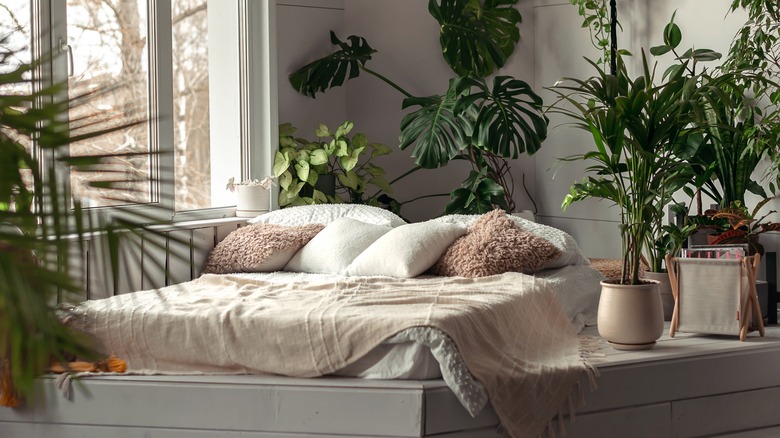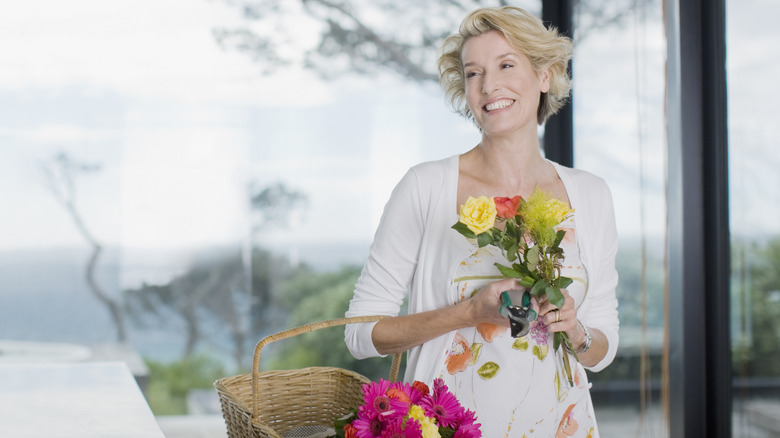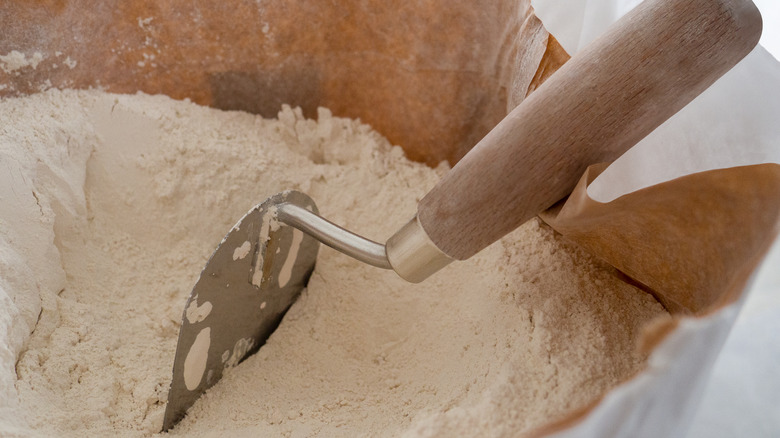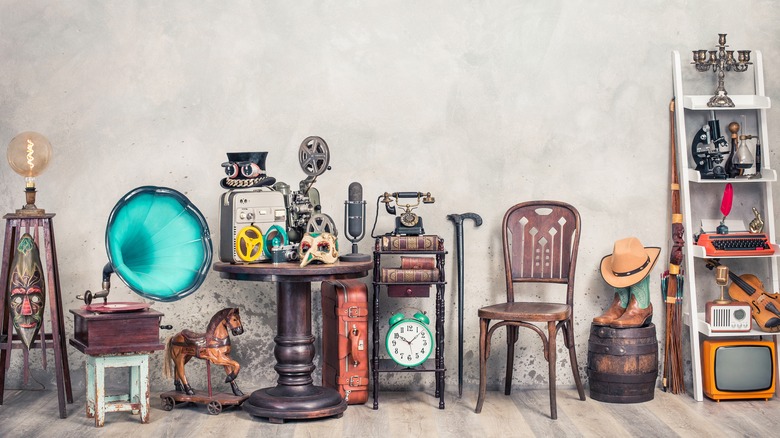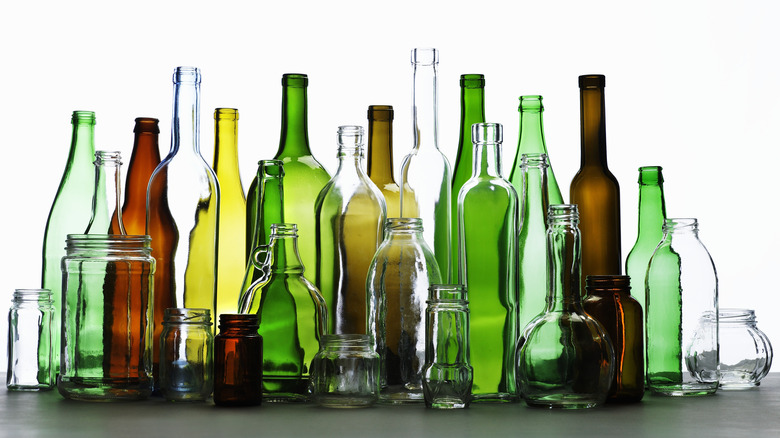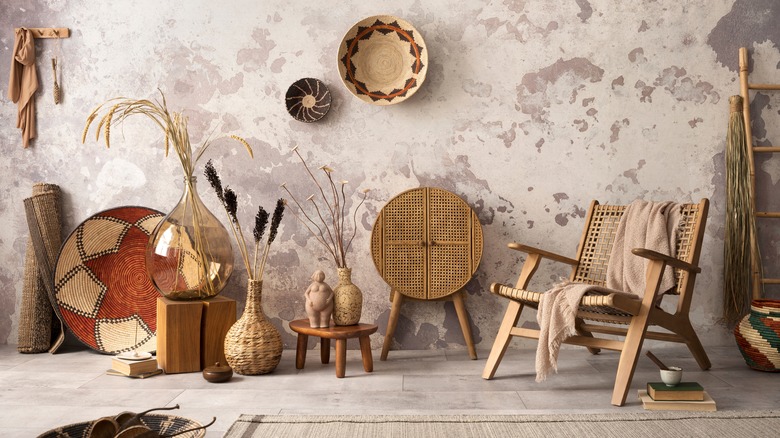Green Home Decor Tips That Keep Climate Change In Mind, According To An Expert
What you do in your home impacts the world around you, even if you don't realize it. While many people want to be more environmentally friendly, climate change can sometimes seem like a global issue that can't be tackled on an individual basis. Yet, you can have a green home by changing your day-to-day lifestyle and decorating habits in small but meaningful ways. This could mean buying sustainable furniture or shopping at retailers with a green plan, but it can be even easier than that.
"Our homes embody our family, creativity, safe space, and where we spend most of our time throughout our lives," says Mandalin Sattler, Director of Permaculture Systems at New Climate Culture, in an exclusive interview with House Digest. "In a culture of cheap, fast, easy, and disposable, it takes some intentional consumer practices to live a holistic life."
Achieving this balance doesn't have to be out of reach, especially if you focus on a few key things. "Think of the 3 Rs: reduce, reuse, and recycle," says Sattler. "Reducing consumption can aid us in moving away from this hyper-capitalistic, waste-driven, consumeristic market. This doesn't mean to leave our spaces unadorned. Rather, reduce the amount of new items you buy." To help you set the correct mindset, Sattler offers several simple strategies that can change the way you decorate your home.
Look to nature as inspiration for eco-friendly decorating
Nature provides a perfect example of beautiful spaces without manufactured products or over-produced items. From rolling hills with the perfect pitch of green to the delicate beauty of leaves falling to the ground in the fall, natural beauty is impossible to reproduce. So begin there when you need inspiration for your new eco-conscious home design. "My favorite way is looking to nature as my inspiration for eco-friendly decorating," Sattler says.
In need of cheap staple décor that isn't fast homeware? Look for items in nature to bring into your home. "Next time you are collecting shells on a beach, discovering intricate, moss-covered sticks at the park, or plucking gorgeous flowers, take some specimens home and arrange them like an altar to the natural world. Press your flowers in a book for picture framing, and place seashells in a vase as a table center. Invoke creativity by bringing the natural world inside," Sattler says.
Reduce the amount of toxins you create
When living life with an eco-focus, you must consider your role in polluting the environment, including the materials you purchase. For instance, using certain pesticides in your garden can pollute groundwater or harm beneficial native insect species. Unfortunately, certain household products can have a similar effect on the environment. "Reducing the amount of toxins we create in society is imperative for our collective health and well-being. Instead of standard house paint, reduce your toxic chemical load by choosing an alternative like natural clay plaster for painting and finishing surfaces," Sattler says. "Natural clay plaster has a variety of texture finishes and pigments and can be used in wet areas like bathrooms, kitchens, and backsplashes. It won't give off gas VOCs and actually releases negative ions from the clay, which have multiple beneficial effects on the human body."
Consider this concept in all areas of your home when working out your space's décor. While an artificial houseplant in a plastic pot may seem like an affordable way to brighten up a home office, a real plant in a ceramic pot is likely to purify the air in your home instead of releasing VOCs – even if it may cost a little bit extra. "So not only are you choosing something eco-friendly, this decorative function gives back to your health," Sattler says.
Reuse what's already been created
It's easy enough to buy decorative pieces mass-produced to keep your home trendy. However, while cheap, semi-disposable home goods may scratch an aesthetic itch for a little while, they rarely possess the quality or lasting power of vintage or pre-owned décor. "One way to keep the cycle of items out of landfills while also renovating and decorating through an eco-friendly perspective is to reuse what is already created. Hit up garage sales, thrift stores, and online markets for buying and selling," Sattler encourages.
Sometimes you can end up with your favorite new sofa or cabinet without stepping foot in a furniture store. If a friend or community member is revamping their living room, ask if there's anything they're willing to let go of. You may even consider starting a neighborhood trading program that encourages saving functional furniture from ending up in landfills. "Even better, trade with folks around you. Trading and bartering is a lost art that can help people meet their needs within their community," Sattler explains. "One person's past decorations could be just what you were looking for. This also gives us an opportunity to build, strengthen, and explore our community resources."
Recycle and upcycle everyday items
What are you tossing out each day? Old newspapers can be used as paper pots to start seeds indoors. Glass bottles can be recycled or repurposed into a vase for flowers you've picked from your garden. Organic garbage can be upcycled into compost to help your new blooms thrive. However, if you don't mind getting creative, upcycling opportunities are endless. "For example, glass bottles are built into clay adobe and cob structures to add a beautiful feature of color refraction as sunlight moves through the glass," Sattler explains. "You can build whole structures with this method or add additions and decorative outdoor features to your designs." A project like this may be an investment in time, but it will likely prove to be an enriching process for DIY-inclined creatives who want to cut back on waste.
The more creative you are, the better. Consider the next area you plan to revamp and look for ways to recycle and upcycle items. "I do a lot of my upcycling in the garden, like scavenging old wood and basins for making decorative garden beds and planters. The opportunities are endless, so get creative," Sattler encourages.
Practice the fourth R: Reciprocity
If you think that three "R's" aren't enough, you're in luck — there's a fourth "R" that can help improve the health of both the environment and your local community. "Reciprocity is defined as 'the practice of exchanging things with others for mutual benefit.' When buying new items for decorating ourselves and our space, consider purchasing from local artists, vendors, and creators, especially those who prioritize using natural materials," Sattler says. "This supports your local community, keeps manufacturing of products to a smaller scale, and means less greenhouse gasses emitted during creation and transportation."
Consider a visit to the local craft fair or boutique. You may even find a few local artists selling their items online in your area. Incorporate these finds into your home, as their value and artisanal craftsmanship are likely far superior to mass-produced items from the local big box store. Even better, you get to support local people and can even choose to buy from craftspeople who lead sustainable lives themselves. "By purchasing locally-crafted goods, you are directly supporting someone's livelihood, invigorating your local economy, and making an ecologically friendly decision with how your money is spent," says Sattler.
